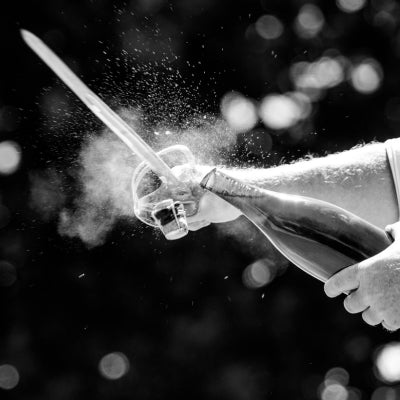
Everything Happens for a Riesling Day!
March 13th marks Riesling Day, and if you ever were a Riesling doubter, today is the day to put your “it’s too sweet” misgivings aside and give a grape a chance. Riesling is impeccable in its ability to age, impressive in its capacity to express terroir, and expansive in its malleability; from crisp, dry wines, to luscious crystalline dessert icewines, to sparkling wines.
Riesling most likely originated in the Rheingau, an area of Germany north of the Rhine River. It is known for thriving even in cold climates and expressing terroir while remaining exquisitely idiosyncratic. Being a high acid grape, it takes well to being made in sweet styles, as the acid balances the sugar.
Despite its sweet reputation, it makes stellar dry wines too, particularly in Alsace. Some of the most renowned producers to seek out include Hugel, Trimbach, Weinbach, and Zind-Humbrecht. If the names sound German, it is due to the region's long history of flip-flopping from French to German ownership, and back again. The regional flutes d’Alsace, as the slender tapered bottles are known to hold some of the purest, most fragrant, and bone-dry Rieslings your heart could desire.
While you can find dry Riesling there, if you are willing to delve into the sweet side, Germany is where you want to go. Look for bottles labeled Auslese, Beerenauslese, Trockenbeerenauslese, and Eiswein. The first three will likely have been made with some level of noble rot influence, with Auslese being the least sweet of them. Eiswein is made with berries that have frozen on the bush. When pressed the ice stays in the press yielding exacting, clean, and lusciously sweet juices. The legends are almost too numerous to name – Dr. Loosen, Egon Müller, August Kesseler, Donhoff, Fritz Haag…the list to try goes on.
Austria fashions some fabulous Rieslings, both sweet and dry. For the top-shelf rich but dry offerings out of the Wachau, look for bottles labeled as “Smaragd”, which indicates that the wine has higher than 12.5 percent alcohol and is highly concentrated and dry showing ripe fruit flavors. Back to the sweet side, conveniently enough Austria uses the same terminology as Germany to denote sweetness – Spätlese, Auslese, Beerenauslese, Trockenbeerenauslese, and Eiswein.
In Australia, Riesling has made a unique space for itself, particularly in the Clare Valley and Eden Valley regions. Dry Riesling is also typical here, with idiosyncratically lime-accented aromas and flavors. It may not have as big a reputation as Shiraz or a Coonawarra Cab, but is a variety with growing consideration.
Of course, you can find Riesling elsewhere – California, New Zealand, Washington, and onwards. Wherever you source yours from whether you prefer it sweet or dry, there is a Riesling out there for you!
Cheers!
Want to read more? Take a look at our other blogs:



